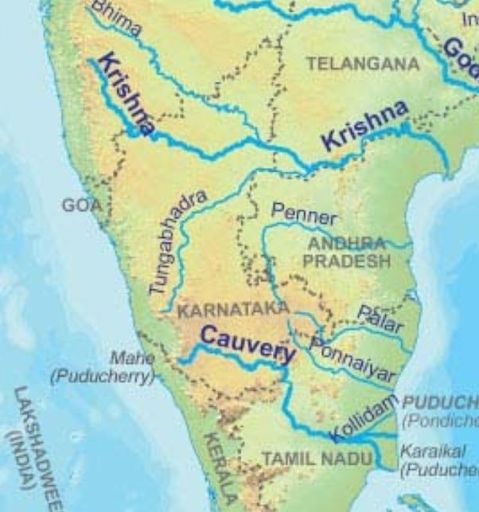Important Facts For Prelims
Tungabhadra Dam
- 21 Aug 2021
- 2 min read
Why in News
Recently, the Vice President visited the Tungabhadra dam in Karnataka.
Key Point
- About:
- Tungabhadra dam also known as Pampa Sagar is a multipurpose dam built across Tungabhadra River in Hosapete, Ballari district of Karnataka. It was built by Dr. Thirumalai Iyengar in 1953.
- Tungabhadra reservoir has a storage capacity of 101 TMC (Thousand Million Cubic feet) with catchment area spreading to 28000 square kms. It is about 49.5 meters in height.
- Importance:
- It is the life-line of 6 chronically drought prone districts of Bellary, Koppal and Raichur in Karnataka (popularly known as the rice bowl of Karnataka) and Anantapur, Cuddapah and Kurnool in neighbouring Andhra Pradesh.
- Besides irrigating vast patches of land in the two states, it also generates hydel power and helps prevent floods.
- It is a sacred river in southern India that flows through the state of Karnataka to Andhra Pradesh. The ancient name of the river was Pampa. The river is approximately 710 km long, and it drains an area of 72,200 sq km.
- It is formed by the confluence of two rivers, the Tunga River and the Bhadra River. Both Tunga & Bhadra Rivers originate on the eastern slopes of the Western Ghats.
- The greater part of the Tungabhadra’s course lies in the southern part of the Deccan plateau. The river is fed mainly by rain, and it has a monsoonal regimen with summer high water.
- It’s Major tributaries are the Bhadra, the Haridra, the Vedavati, the Tunga, the Varda and the Kumdavathi.
- It flows in a more or less northwest direction before joining the eastern river Krishna. The Krishna River finally ends into the Bay of Bengal.







